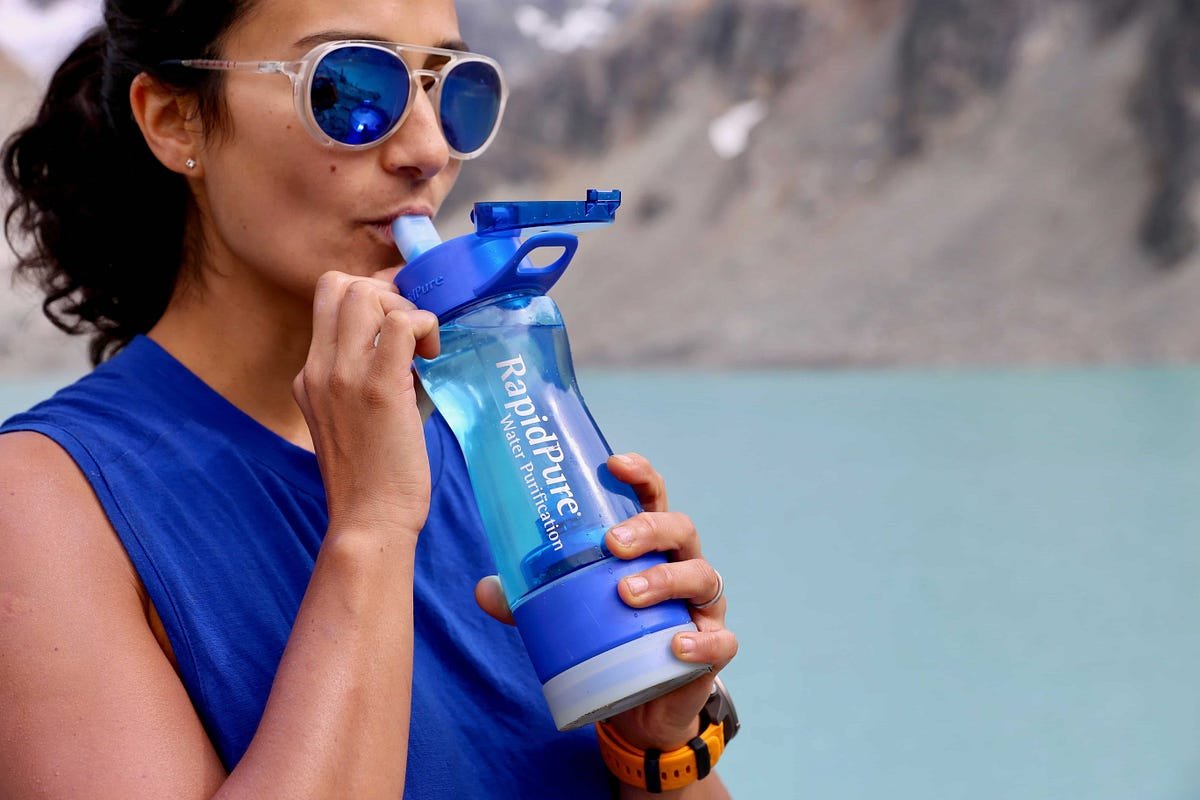The Day I Nearly Collapsed on Angel’s Landing | by Night Sky in Capitol Reef | Jul, 2025

The scorching Utah sun beat down mercilessly as I stumbled along the narrow ridge of Angel’s Landing, my vision beginning to blur and my legs trembling with each step. What started as an ambitious sunrise hike had turned into a dangerous game of survival, and I was losing. This is the story of how I nearly became another cautionary tale about dehydration on one of America’s most challenging trails.
That terrifying morning in Zion National Park taught me lessons about hydration that no guidebook could convey — lessons that have since kept me safe on hundreds of trails across the American West.
It was 4:30 AM when my hiking partner Jake and I set out from the Riverside Walk parking lot, headlamps cutting through the pre-dawn darkness. We were both experienced hikers — or so we thought. I carried a single 20-ounce water bottle, convinced that the early start would help us avoid the heat and that we’d be back down before the real scorching began.
Looking back, this was my first critical mistake. I had hiked Angel’s Landing twice before, but both times were in cooler seasons. I underestimated how quickly the desert environment would tax my body, even in the early morning hours. The 5.4-mile round trip with 1,488 feet of elevation gain seemed manageable — after all, I’d conquered much longer trails.
The first warning sign came during the famous Walter’s Wiggles switchbacks. Despite the cool morning air, I found myself reaching for my water bottle more frequently than usual. By the time we reached Scout Lookout, I had already consumed more than half my supply. Jake, who had brought a 3-liter hydration pack, offered to share, but my pride got in the way.
“I’ll be fine,” I assured him, though a nagging voice in my head whispered otherwise.
The final ascent to Angel’s Landing is where my overconfidence nearly cost me dearly. Gripping the chains that guide hikers along the narrow ridge, I began experiencing what I now recognize as classic dehydration symptoms. My mouth felt like cotton, my heart was racing far beyond what the exertion should have caused, and most alarmingly, I had stopped sweating despite the climbing temperatures.
Halfway across the spine-tingling final section, I had to stop. My hands were shaking so badly that I couldn’t trust my grip on the chains. Jake noticed immediately and pressed his water tube into my hand, but the damage was already significant. I had entered the dangerous zone where my body was struggling to maintain core temperature regulation.
What followed were the longest 45 minutes of any hike I’ve ever experienced. Every step back felt monumental, and I had to stop frequently to rest in whatever shade I could find. Jake stayed with me, monitoring my condition and forcing me to drink small sips regularly. Looking back, his quick thinking and preparedness likely prevented what could have been a medical emergency requiring helicopter evacuation.
- • Increased thirst despite minimal water intake
- • Headache developing during ascent
- • Reduced energy levels beyond normal exertion
- • Decreased urination and darker urine color
- • Loss of appetite at our planned summit snack break
That harrowing experience completely transformed my approach to hiking hydration. I spent the following weeks researching, consulting with wilderness medicine experts, and completely overhauling my preparation strategies. Here are the critical lessons that emerged from my near-disaster:
I now begin hydrating 24–48 hours before challenging hikes, consuming 16–24 ounces immediately upon waking on hiking days, and monitoring urine color as a hydration indicator.
My new rule: 1 liter per 2 hours of hiking, plus 50% extra for hot conditions or high altitude. For Angel’s Landing, that means carrying at least 3–4 liters, not my previous inadequate 20 ounces.
I learned that plain water alone can lead to hyponatremia during extended exertion. I now carry electrolyte supplements for any hike exceeding 3 hours or in hot conditions.
Rather than drinking large amounts infrequently, I now consume 6–8 ounces every 15–20 minutes during active hiking, preventing the deficit that nearly overwhelmed me.
Perhaps most importantly, I learned to respect the environment’s power to quickly overwhelm even experienced hikers. Desert conditions, high altitude, and intense physical exertion create a perfect storm that can lead to rapid dehydration, even when you think you’re prepared.
My experience on Angel’s Landing could have had a very different ending. While I was fortunate to have a prepared hiking partner and to recognize the severity of my situation before it became life-threatening, not every hiker is so lucky.
The statistics are sobering: dehydration-related hiking emergencies have increased by 30% in the past decade, particularly in popular desert destinations like Zion, Grand Canyon, and Joshua Tree. Many of these incidents are entirely preventable with proper preparation and awareness.
Since that day, I’ve successfully completed Angel’s Landing four more times, along with dozens of other challenging desert hikes, without incident. The difference? A comprehensive understanding of hydration science and prevention strategies that go far beyond simply carrying more water.
If you’re serious about hiking safely in challenging environments, I highly recommend diving deeper into proven hydration strategies that prevent wilderness emergencies. The comprehensive approach I learned has become my bible for safe trail adventures, covering everything from pre-hike preparation to emergency protocols.
That terrifying morning on Angel’s Landing transformed me from an overconfident weekend warrior into a safety-conscious backcountry enthusiast. The lessons learned from my near-disaster have since kept me safe through hundreds of miles of desert hiking, high-altitude adventures, and multi-day expeditions.
Today, when I see other hikers making the same mistakes I once made — carrying inadequate water, ignoring early warning signs, or underestimating environmental conditions — I make it a point to share my story. Not to frighten them away from the trails, but to help them approach the wilderness with the respect and preparation it demands.
The irony is that proper hydration strategy actually enhances the hiking experience rather than detracting from it. When your body is properly fueled and hydrated, you can focus on the incredible landscapes, challenging routes, and sense of accomplishment that make hiking so rewarding. You’re not fighting against your body’s distress signals or cutting adventures short due to poor planning.
Every time I clip that hydration pack onto my shoulders or check my electrolyte supplies before a big hike, I’m reminded that the mountains will always be there — but we need to ensure we’re prepared to meet them safely. The wilderness doesn’t forgive oversight, but it rewards those who approach it with knowledge, respect, and proper preparation.

